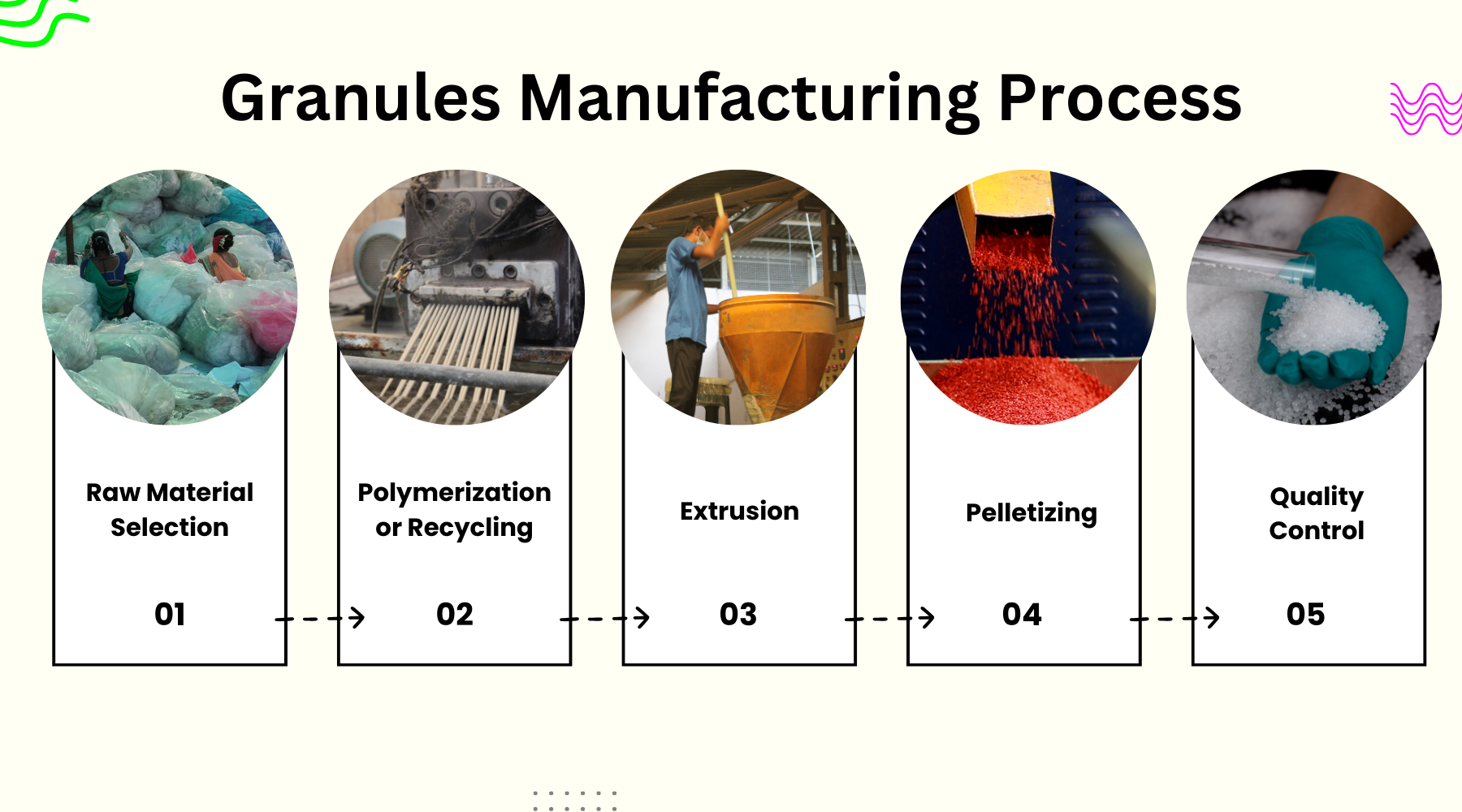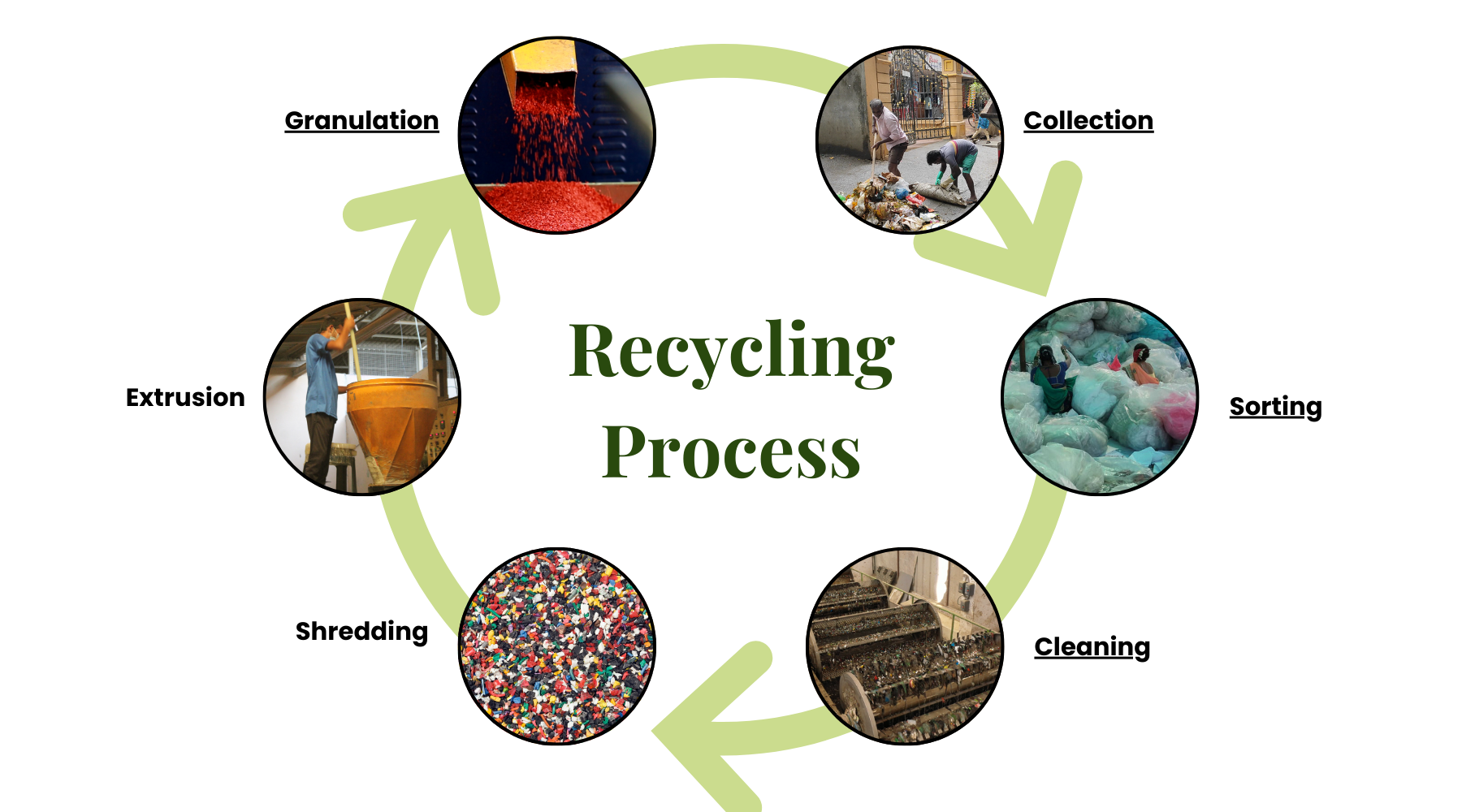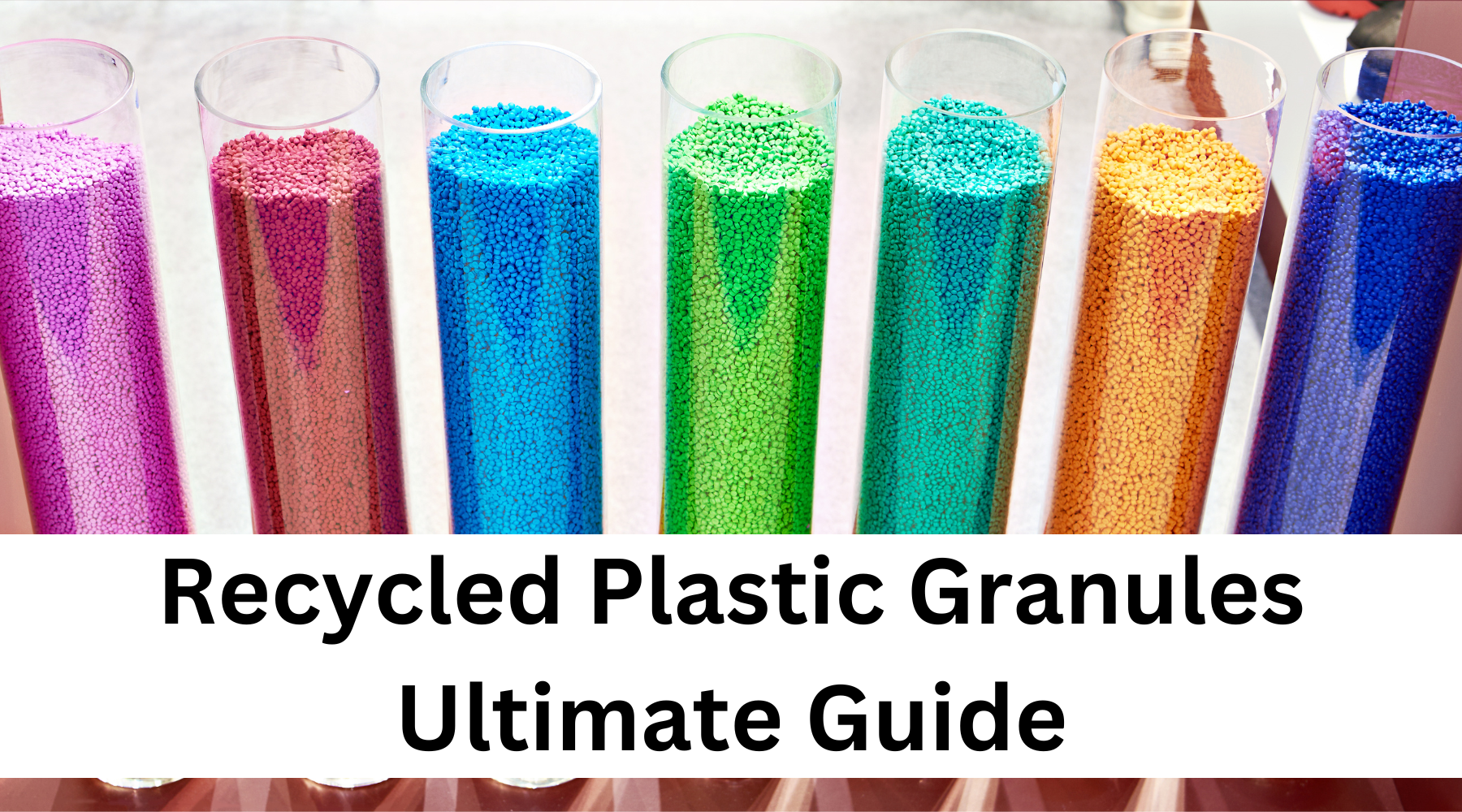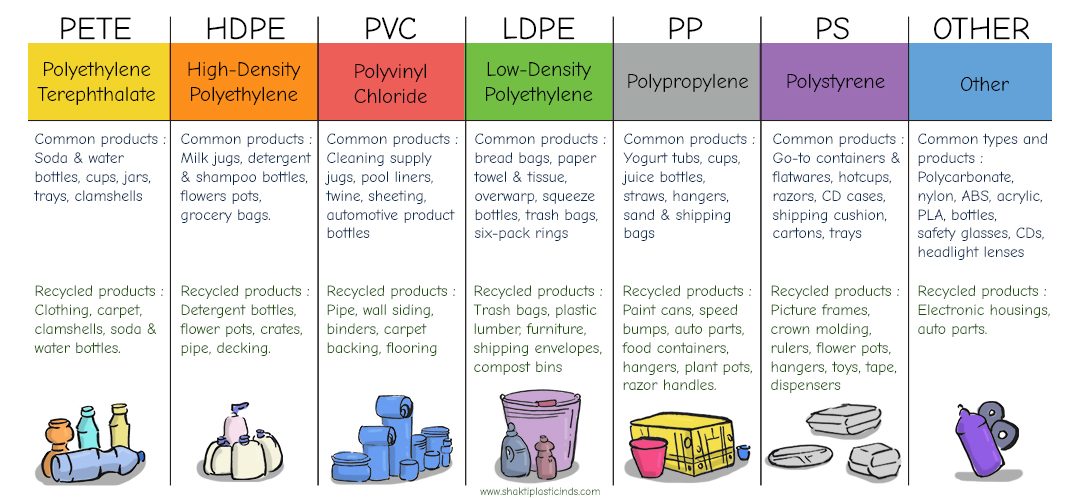Introduction to Plastic Granules
Plastic granules are small, solid particles of plastic that serve as the raw material for creating various plastic products. These granules are melted down and molded into a wide range of shapes and forms, from everyday items like bottles and bags to high-end industrial components.
Plastic granules are an essential part of the plastic industry, representing the intermediary stage between raw materials (such as crude oil, natural gas, or recycled plastics) and the finished product. They are cost-effective, easy to transport, and allow manufacturers to customize the production process to suit different applications.
Plastic granules are classified based on the type of polymer they are made from. Each type has its own characteristics, strengths, and uses:
- LDPE (Low-Density Polyethylene): LDPE is a flexible, soft plastic used to make products like plastic bags, film wraps, and containers. It is known for its resilience and ability to withstand pressure, making it ideal for packaging applications.
- HDPE (High-Density Polyethylene): HDPE is stronger and more rigid compared to LDPE. It is commonly used to manufacture items such as milk jugs, detergent bottles, and outdoor furniture. It has excellent resistance to chemicals and impact, making it highly durable.
- LLDPE (Linear Low-Density Polyethylene): LLDPE combines the strength of HDPE and the flexibility of LDPE. It is widely used in films, stretch wraps, and plastic liners. Its flexibility allows for a thinner material to be used without sacrificing strength.
- PP (Polypropylene): Polypropylene is a versatile plastic known for its heat resistance and toughness. It is used to make a range of products such as automotive parts, textiles, and medical devices. Its durability and low moisture absorption make it ideal for high-performance applications.
- PVC (Polyvinyl Chloride): PVC is a rigid plastic often used in construction for pipes, window frames, and vinyl siding. It is durable, weather-resistant, and has good electrical insulation properties. PVC can also be made more flexible when combined with plasticizers, making it suitable for products like cables and flooring.
- PET (Polyethylene Terephthalate): PET is commonly used in the production of bottles, food containers, and synthetic fibers. It is lightweight, transparent, and offers excellent moisture and gas barrier properties, making it perfect for packaging applications.
Related Articles:
Plastic Granules Manufacturing Process

- Raw Material Selection: The process starts with the selection of raw materials, which can include virgin polymers (derived from petrochemicals) or recycled plastics.
- Polymerization or Recycling: Virgin plastic granules are made through polymerization, a chemical reaction that transforms monomers like ethylene or propylene into polymers (plastic). Recycled granules, on the other hand, are made by collecting, cleaning, and shredding used plastic, which is then melted down and reformed into granules.
- Extrusion: The molten plastic is pushed through an extruder, which shapes it into long strands. These strands are cooled and solidified before being cut into small granules.
- Pelletizing: In the final stage, the solid strands are cut into uniform granules or pellets. The size of the granules can be customized depending on the application.
- Quality Control: Throughout the process, quality control checks ensure the granules meet the desired specifications, including size, color, and consistency.
Also Read: Step-by-step guide to plastic granules manufacturing process
Uses of Plastic Granules
Plastic granules are widely used across various industries, including:
- Packaging: Granules are used to manufacture films, containers, and wrapping materials.
- Automotive: HDPE and PP granules are utilized for car parts, dashboards, and bumpers.
- Construction: PVC granules are a key material in making pipes, cables, and window frames.
- Textiles: PET granules are used in the production of synthetic fibers for clothing and upholstery.
- Consumer Goods: LDPE and PP granules are used in making household items like bottles, toys, and furniture.
- Electronics: Granules are used in making casings, wires, and other components.
Also Read: How Recycled Plastic Granules Are Changing the Game in Sustainability
Plastic Granules Market and Suppliers
The market for plastic granules is vast and highly competitive. In India, major suppliers include companies like Reliance Industries, Supreme Petrochem, and The Shakti Plastic Industries. Globally, large manufacturers like ExxonMobil, BASF, and Dow Chemical play significant roles.
Key Trends of Recycled Plastic Granules:
- Growing Demand for Recycled Granules: With sustainability becoming a focus, recycled plastic granules are increasingly popular in industries looking to reduce their carbon footprint.
- Price Fluctuations: The price of plastic granules is influenced by raw material costs, especially crude oil prices, making the market highly volatile.
- Technological Advancements: New technologies in the granulation process are improving the quality of recycled granules, making them a viable alternative to virgin materials.
Recycling Plastic Granules

- Collection: Used plastics are collected from various sources like households, businesses, and industrial sectors.
- Sorting: Plastics are sorted based on type (e.g., HDPE, LDPE, PET).
- Cleaning: The sorted plastics are washed to remove impurities like dirt, labels, and food residue.
- Shredding: The clean plastics are shredded into smaller pieces to prepare them for melting.
- Melting and Re-Extruding: The shredded plastic is melted down and then extruded into strands, which are cut into granules.
- Final Product: These recycled granules can be used to produce new plastic products, reducing the need for virgin plastic.
Benefits of Recycling Plastic Granules:
- Environmental Impact: Reduces plastic waste in landfills and oceans.
- Cost Efficiency: Recycled granules are often cheaper than virgin plastic.
- Energy Savings: Recycling plastic consumes less energy compared to producing new plastic from raw materials.
Future of Plastic Granules
As the world moves toward more sustainable solutions, innovations in plastic granules are becoming more important. Biodegradable granules made from renewable resources like corn starch and sugarcane are gaining popularity. These eco-friendly alternatives break down faster than traditional plastic and can reduce environmental pollution.
Key Future Trends:
- Growth of Biodegradable Plastic Granules: Increasing demand for biodegradable options in industries like packaging and agriculture.
- Circular Economy Practices: More companies are adopting circular practices, where plastic granules are reused repeatedly to minimize waste.
- Technological Innovations: Advances in recycling technologies are improving the quality and usability of recycled plastic granules.
Conclusion
Plastic granules are the backbone of the plastic manufacturing industry, serving a variety of applications across industries. With increasing focus on sustainability, the shift towards recycled and biodegradable granules is inevitable. As the market evolves, innovations will continue to shape the future of plastic granules, making them more environmentally friendly and versatile.
FAQs for Plastic Granules
- What are plastic granules used for?
Plastic granules are used as raw materials for creating various plastic products, including packaging, automotive parts, textiles, and construction materials. - How are plastic granules made?
Plastic granules are made through polymerization or recycling processes, where raw materials are melted, extruded, and cut into small pellets. - What is the difference between LDPE and HDPE granules?
LDPE granules are soft and flexible, making them suitable for packaging, while HDPE granules are stronger and more rigid, ideal for products requiring durability. - Can plastic granules be recycled?
Yes, plastic granules can be recycled, reducing the need for virgin plastic and contributing to sustainability efforts. - What is the future of plastic granules?
The future of plastic granules lies in biodegradable and recycled materials, driven by a growing demand for eco-friendly alternatives.


